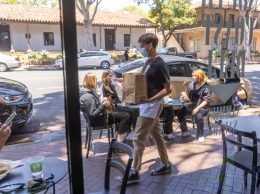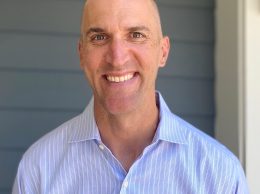By Chia-Li Chien
Many states, including California, identified a list of critical sectors to remain operational during the COVID-19 crisis. The rest of us need to work from home or close our businesses until further notice.
The stock market reacts to the uncertainty in this public health crisis volatilely. The ripple effect causes the federal government to assist those who need to stay afloat until our country stabilizes. Bipartisan relief packages are changing as new estimated damages arise.
Having standby working capital, such as a line of credit or emergency fund, are best practices for many businesses. However, no one knows the extent of the closure, and the possibility of running out of accessible capital worries many business owners.
I don’t like to borrow money, and many of my clients have the same attitude, but in a desperate time, you should take advantage of what’s available to keep your business open and prosper later.
Capital providers including banks, private equity firms and the U.S. Small Business Administration decline about one-third of the businesses that apply for a loan in a normal economic environment due to the poor quality of the earnings or cash flow, according to the 2019 Pepperdine Private Capital Markets Report by Craig Everett.
Also, about 95 percent of the loans required personal guarantee and collateral. The capital providers’ expected return ranges from 3.6 percent to 49.5 percent if the prime rate is at 3.5 percent, according to Robert Slee’s book “Private Capital Markets: Valuation, Capitalization, and Transfer of Private Business Interests.” Yes, even the SBA has pre-determined interest that borrowers need to pay back.
The SBA has disaster loan assistance for those states that declared a disaster. The disaster loan assistance is available for businesses, nonprofits, homeowners and renters. For the most part, the disaster loan amount is up to $2 million with fixed interest of 3.75 percent (or 2.75 percent for nonprofits). The term could be up to 30 years. There is a collateral requirement if you borrow more than $25,000. You cannot use the disaster loan to refinance or pay off existing loans, and you need to maintain proper insurance. Remember, this is still a loan or debt.
Congress passed the Coronavirus Aid, Relief, and Economic Security Act recently. Under this bill, small businesses that have fewer than 500 employees can participate in the SBA Paycheck Protection Program. This program will provide loans that can be forgiven if small businesses use them for payroll.
I encourage people to consider applying for the Economic Injury Disaster Loans as soon as possible if their businesses have been impacted because there is limited funding available from the federal government.
The SBA developed a simple three-step process to apply for a disaster loan. You need to have business and personal financial data handy when applying. The personal financial statement, or SBA Form 413, is required to help determine which of your assets could be collateralized. Your accountant or financial adviser can help you fill out the form if you are not familiar with the terminology. You also will need to fill out and sign an IRS Form 4506-T, which allows the SBA to access your tax filing records.
How much you should borrow is an important question and one your accounting or finance team can help you determine. Remember, unless the loan is forgiven, you or your business will need to pay back the principal as well as interest.
I sincerely hope that you or your business don’t need a loan. But if you do, and you have not initiated the discussion with your accounting or finance team, you should do so as soon as possible. Please remember the quality of your business earnings and cash flow is essential.
Don’t waste the COVID-19 crisis, especially if it has left you with downtime. Use it to plan strategically and re-evaluate your business model. Your business model needs to stay flexible in any economic climate. Together, we can all come out of this crisis stronger.
• Chia-Li Chien is the director of the financial planning program at California Lutheran University.






 Print
Print Email
Email

















